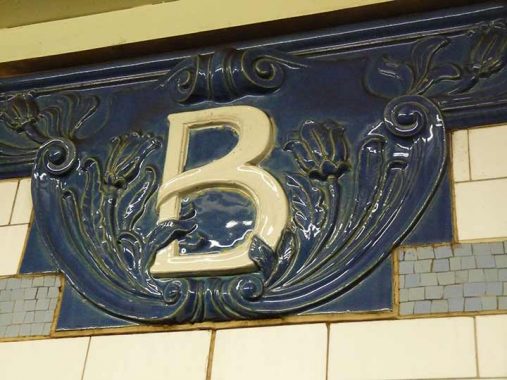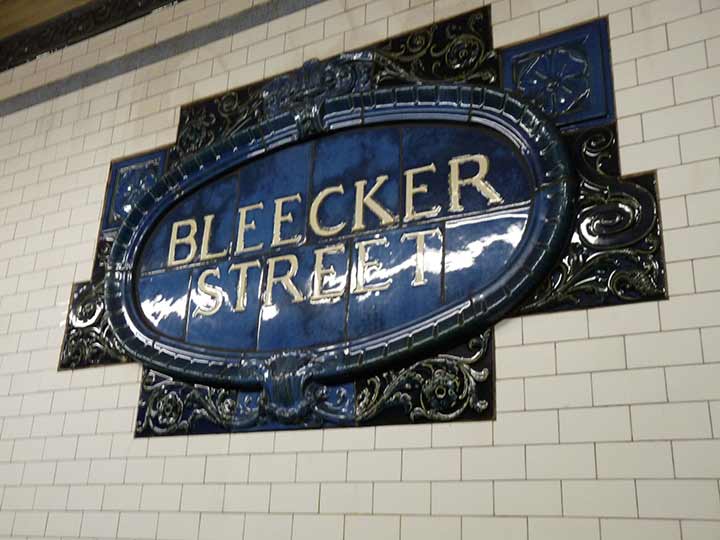
BLEECKER STREET, often misspelled without its “c”, was named for William Bleecker, a friend of Washington Irving and William Cullen Bryant, who was a writer himself: a renowned punster, his work appeared in several publications in the 1810s and 1820s. Bleecker Street runs through his former property. Along with Houston Street, it’s the only named street that extends from the West Village to the East Village, and only because the western end of Bleecker, west of 6th Avenue, was renamed from Herring Street in the early 1800s.
NYC’s “other” Bleecker Street is in Bushwick, Brooklyn and Ridgewood, Queens and was apparently named after the one in Manhattan. In addition, there’s a Bleeker Place in New Springville, Staten Island, without the “c.”
The Bleecker Street station serving the #6 train is one of the Interborough Rapid Transit (IRT)’s “Original 28” stations, and its station signage, created by original subway architects Heins & LaFarge, is among the most distinctive in the subways. The highlights of Bleecker Street station are unquestionably the brilliant blue Grueby Faience station ID plaques. Each plaque is built from 27 pieces of faience ceramic.

Better yet, the plaques were cleaned and rehabbed a few years ago after years of suffering from water leakage and other indignities, and look as good as they did 120 years ago when they were installed. The subways celebrate its centivintennial on October 27th, 2024. Station cartouches show tulips, apropos in a city with Dutch origins.
As always, “comment…as you see fit.” I earn a small payment when you click on any ad on the site. Take a look at the new JOBS link in the red toolbar at the top of the page on the desktop version, as I also get a small payment when you view a job via that link.
9/16/24


5 comments
One of the reasons that a lot of the plaques look so good is not because they were rehabbed but rather they were reproduced to exact copies and put in place of the originals. This isn’t the first time the MTA has done this. The BRT plaque and the two BMT Lines terra cotta signs on the outside of the Coney Island station building are also reproductions.
So what then happened to the originals?
Most likely stored somewhere within the Transit Museum archives.
It is refreshing to know that there is concern within the MTA to preserve valued parts of our past.
In the 1960’s the southbound #6 platform at Bleecker Street was connected to the IND Broadway-Lafayette B D F M station creating a free transfer but only to and from #6 trains heading southbound. The northbound platform was offset from the southbound side and did not extend over the IND station. In 2012, that issue was remedied when the northbound #6 platform was extended southward to create a full free transfer at this location.